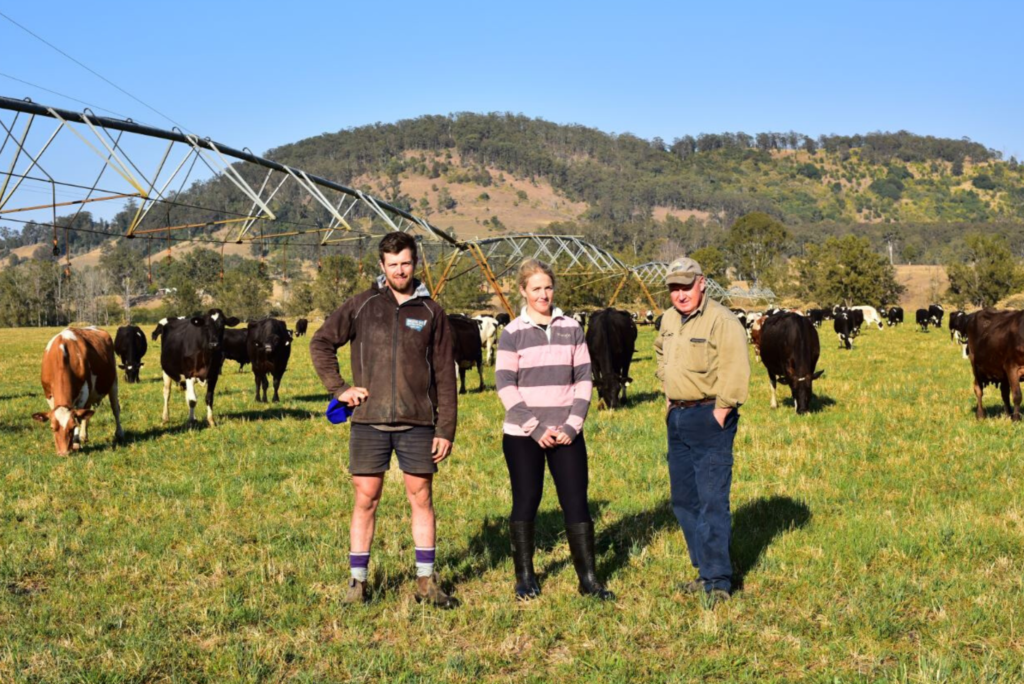Dairy farmer Trevor Middlebrook’s cows would normally eat up to 18 kilograms dry matter (18kgDM) a day of fresh pasture grazed off 200 hectares at Bowman Farm, in the scenic Gloucester region on the Mid North Coast of NSW.
This year, however, there’s been about half the average rainfall in a region notable as being rain-assured. With just 560 millimetres recorded at Bowman Farm, the main dam is at its lowest in decades – with a scarce 30 million litres, reserved for maintenance use only, from a capacity of 283 million litres.
“We are looking for every drop of rain,” conceded Mr Middlebook, whose family-run dairy operation includes daughter Olivia managing the Holstein-bred herd and calf-rearing, while son Tom oversees grazing rotations and pasture management.
With only 2kgDM of fresh pasture available daily per cow on-farm, the family has been forced to cut and carry the bulk of their fresh grass ration from nearby property Kia Ora.
“While carrying in five tonnes each day of triticale and rye grass from Kia Ora has impacted our bottom line, it’s been a lifesaver under these circumstances,” said Mr Middlebrook.
To maintain herd condition – and milk yields above 30 litres with a desirable 3.35 per cent protein and 3.9 per cent fat – the Middlebrooks supplement grass with a touch of cottonseed meal, fed daily on the feed pad. Lactating cows are further fed ground wheat and corn, with a 2kg serve of Manildra Group’s DDG-S Wheat Pellets added into the bails.
“We feed the pellets all the time, not just because of dry conditions,” said Mr Middlebrook.
Their herd’s nutritionist, Dr Neil Moss, said the DDG-S Wheat Pellet offered more flexibility than other ingredients and – as part of an overarching feed regime – resulted in more consistent milk solid yields.
“The DDG-S Wheat Pellets are an excellent source of fermentable carbohydrates that help meet the lactating cows’ energy requirements,” he said. “In combination with the rumen-degradable protein and bypass protein, this feed is very useful.
“The DDG-S Wheat Pellet can be fed with a high degree of safety, as there is little chance of acidosis. We are also particularly happy with the recent increase in calcium levels in the DDG-S Wheat Pellets, which enables their use as a primary supplement for other cattle, such as dry cows and heifers.”
Manildra Group National Stockfeed Manager Tim Wirth added weight to the importance of feeding a quality supplementary feed.
“Whether your management strategy is low-input or high-input, with dairy farming under current environmental conditions, you need to pay extra attention to the animals’ health and wellbeing while reaching production targets,” Mr Wirth said.
“The Bowman Farm reports their Holstein herd is in excellent condition and delivering on the projected 20,000kg of milk solids each month. While our DDG-S Wheat Pellets can’t claim all the praise, they certainly play an important nutritional role in a well-balanced dairy ration.”
Diverse Diet During Drought Helps Herd Hold Condition
